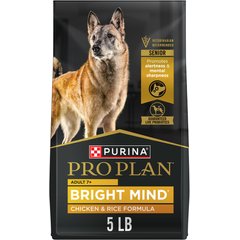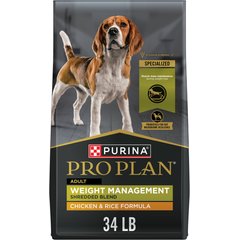What You Need to Know About Raw Food Diets for Dogs
You may be considering a raw food diet for your dog for a variety of reasons.
-
Some people want their dog’s food to more closely resemble what their wild ancestors would have eaten (the idea of biologically appropriate raw food).
-
Some believe their dog’s overall health, and especially their haircoat, would benefit from a raw food diet.
-
Some pet parents feel that raw is better because the nutrients are less available in commercial dry kibble or canned dog foods after going through the cooking process.
Whatever the reason may be to switch to a raw diet for dogs, it is important to approach this decision cautiously so you can make the most educated choice for your dog. Your pet is relying on you to provide a diet that is complete and balanced and appropriate to optimize their long-term health.
Nutritional and Safety Considerations for Raw Food Diets for Dogs
Raw dog food is available commercially, usually as frozen logs that can be thawed prior to feeding. You can also choose to create a homemade raw food diet for your dog. No matter which method you’re considering, here are some important points to keep in mind.
Ensuring Quality Ingredients
The type and quality of ingredients used in raw frozen preparations vary greatly, and the ingredient list will only provide so much information. If you want to know more about the ingredients, you may need to contact the manufacturer.
Raw diets for dogs can also be prepared at home, following a recipe, with ingredients from the grocery store or farmers market. With homemade raw food diets, you can control which ingredient you include and the quality of those ingredients. But you also must make sure that you have the right ingredients in the right amounts.
Getting Balanced Nutrients
The risk with both homemade and commercial raw dog food diets is that often, these diets are not well-balanced for a dog’s nutrient requirements. 1,2 Nutrient deficiencies and diseases can be caused by feeding a diet with too much muscle meat and not enough of the other “parts” that create nutritional balance.
For example, a wolf would eat a whole animal carcass (e.g., a rat or rabbit) that contains muscle meat, bone, tendons, organs, skin, and fur, which makes for a nutritionally complete meal.
However, the parts of a chicken, for example, that we would choose to feed our pets would probably not include most the parts that provide much needed fat, fiber, minerals, and vitamins.
Including Bones or Not
Including bones in a raw diet for dogs can provide the nutritional benefit of added calcium and phosphorous, if the bones can be chewed and ingested. They also help maintain dental health by preventing tartar buildup.
However, bones in the diet can also pose health risks, including obstruction of the esophagus and constipation from having too many bone fragments in the colon.2
Avoiding Bacterial Contamination
Can dogs eat raw meat safely? There are some inherent risks when choosing to serve raw meat—even for people. All raw meat and raw meat-based products may be contaminated with bacteria, like Salmonella and E. coli, causing illness. 1,2
This risk is greater with commercially manufactured raw meat diets and meat purchased from the grocery store rather than a carcass consumed by a wild dog, because processing plants have a high potential for cross-contamination.
Products like hamburger and sausage carry additional risks for contamination because of the chopping and mixing they undergo, which takes the bacteria right into the center of the meat.
It is also important to note that freezing the meat may reduce the number of bacteria present but will not kill all of it.
Issues for Dogs Exposed to Bacteria
The likelihood, however, of most of these bacteria causing your pet any illness is small, but if it happened, you would generally see a sudden onset of diarrhea. Testing for these bacterial contaminates is expensive and rarely done, so you would probably never know the cause for the diarrhea, and your veterinarian would treat it symptomatically.
One exception is Salmonella, which rarely causes illness in healthy animals, but the risk is greater if pets are young, old, pregnant, ill, or stressed. 1-4
Issues for People Exposed to Bacteria
Overall, the bigger risk of illness caused by food-borne harmful bacteria is for the people who share their home with a dog that’s fed a raw food diet, especially those who are young, old, pregnant, or immunosuppressed (e.g., undergoing chemotherapy or on steroid therapy).
You can be exposed to bacterial contaminates both when preparing your pet’s raw food diet and by inadvertently encountering your dog’s feces. Even if a pet shows no signs of illness, these bacteria are continuously shed in the feces, posing a risk to their two-legged family members. 1-4
Preventing Parasite Contamination
Parasite contamination is much more likely in wild carcasses than in raw meat diets fed to pets, whether they are commercial or home-prepared. Freezing the meat prior to feeding may kill some parasites, if present.
Nevertheless, raw pork and raw fish from the Pacific Northwest carry the greatest risk for parasites.
Vet Recommended Dog Food
- Eukanuba Premium Performance Puppy Pro Dry Dog Food, 4-lb bag$25.99Chewy Price
- Purina Pro Plan Bright Mind Adult 7+ Chicken & Rice Formula Dry Dog Food, 5-lb bag$24.68Chewy Price
- Purina Pro Plan Adult Weight Management Shredded Blend Chicken & Rice Formula Dry Dog Food, 34-lb bag$77.48Chewy Price
- Hill's Science Diet Adult Lamb Meal & Brown Rice Recipe Dry Dog Food, 33-lb bag$83.99Chewy Price
Discuss the Switch to a Raw Diet With Your Vet and a Veterinary Nutritionist
The decision as to whether to feed your pet a raw food diet should be made after carefully considering each of these points and talking with your veterinarian, and ideally, a veterinary nutritionist.
Your veterinarian can talk with you about the risks involved in raw food diets for dogs, particularly if your pet is young, old, or debilitated, to help you to make an informed decision.
Consulting with a veterinary nutritionist ensures that the recipe you follow provides balanced nutrition for your pet. These specialists will consider your dog’s specific protein, fat, mineral, and vitamin requirements.
Dog mineral and vitamin requirements differ from humans, so supplements will likely be needed to ensure that the diet is balanced for your pet’s individual needs.
References
1. Miller EP, Ahle NW, DeBey MC. Chapter 11: Food Safety. In: Small Animal Clinical Nutrition, 5th edition. (Ed): Hand, Thatcher, Remillard, et al. Mark Morris Institute. Topeka, Kansas. (225-249); 2010.
2. Freeman LM, Chandler ML, Hamper BA, et al. Timely topics in nutrition: Current knowledge about the risks and benefits of raw meat-based diets for dogs and cats. JAVMA. 243(11): 1549-1558;2013.
3. Joffe DJ, Schlesinger DP. Preliminary assessment of the risk of Salmonella infection in dogs fed raw chicken diets. Canad Vet J. 43(6): 441-442;2002.
4. Finley R, Ribble D, Aramini J, et al. The risk of salmonellae shedding by dogs fed Salmonella-contaminated commercial raw food diets. Canad Vet J. 48(1): 69-75;2007.
Featured Image: iStock.com/elenaleonova



